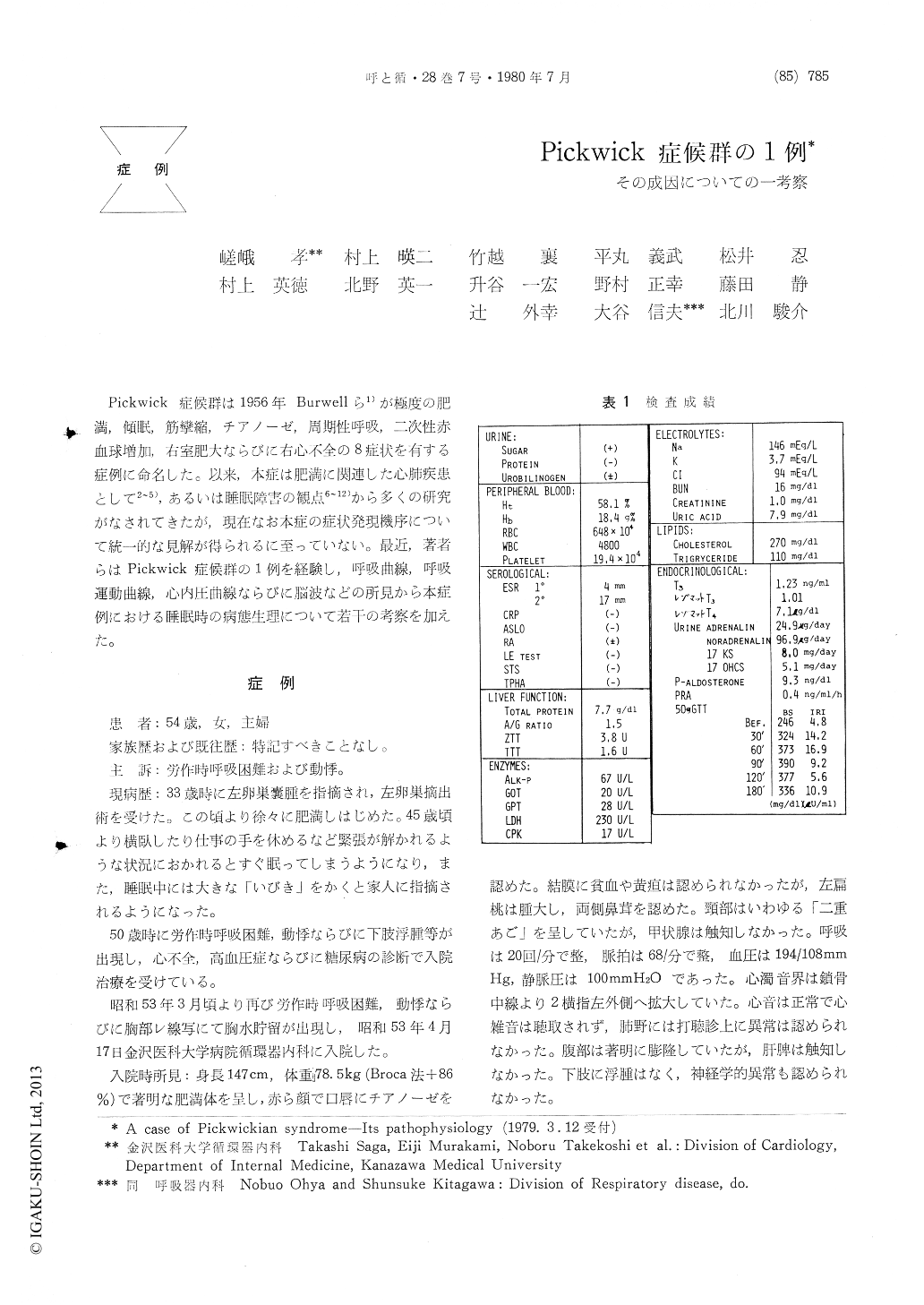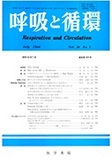Japanese
English
- 有料閲覧
- Abstract 文献概要
- 1ページ目 Look Inside
Pickwick症候群は1956年Burwellら1)が極度の肥満,傾眠,筋攣縮,チアノーゼ,周期性呼吸,二次性赤血球増加,右室肥大ならびに右心不全の8症状を有する症例に命名した。以来,本症は肥満に関連した心肺疾患として2〜5),あるいは睡眠障害の観点6〜12)から多くの研究がなされてきたが,現在なお本症の症状発現機序について統一的な見解が得られるに至っていない。最近,著者らはPickwick症候群の1例を経験し,呼吸曲線,呼吸運動曲線,心内圧曲線ならびに脳波などの所見から本症例における睡眠時の病態生理について若干の考察を加えた。
A 54 years old female was admitted to our hospital with complaints of exertional dyspnea, palpitation and daytime somnolence.
Polycythemia and cardiomegaly were noted on routine laboratory studies. Arterial gas studies showed marked hypercarbia, which was exaggerated while asleep. The ventilatory im-pairment was of constrictive type and the ven-tilatory response to carbon dioxide was reduced. Periodic breathing appeared anytime when the patient fell asleep. Respiration, thoracic and abdominal actography, pulmonary and systemic arterial pressure curves and electrocardiography were recorded by a polygraph during awake and asleep. During wakefulness breathing was regular. However, during asleep obstructive type of apnea was recorded, in which thoracic and abdominal movements persisted and the pulmonary arterial pressure showed marked occillations corresponding to changes in intra-thoracic pressure during apnea. During the apneic period, the thoracic movement and the intrathoracic negative pressure intensified pro-gressively, until the respiration was resumed. Pulmonary arterial pressure was noticiably increased to the maximum values at the end of each apneic period. The electroencephalogram also showed periodic wakeful patterns, preceeding each cycle of the apnea during sleep.

Copyright © 1980, Igaku-Shoin Ltd. All rights reserved.


